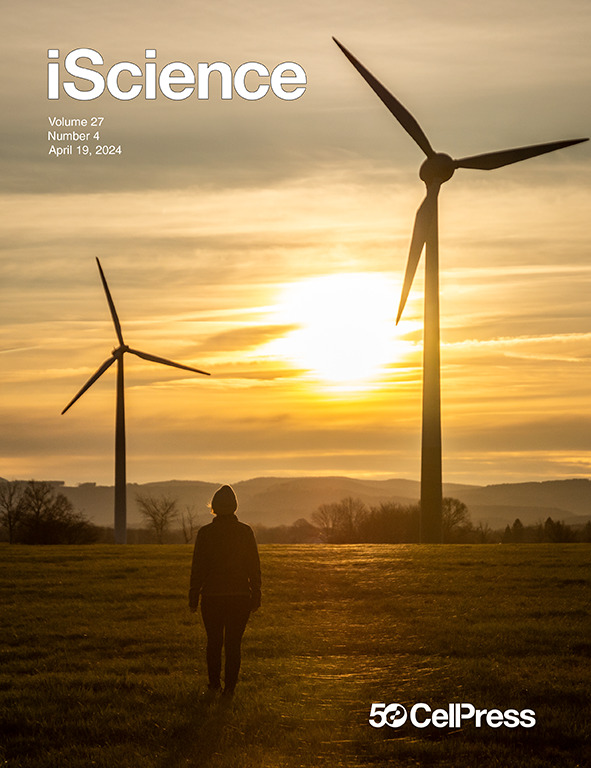胶质母细胞瘤对纺锤体抑制剂的抗药性取决于 STAT3 和治疗诱导的衰老
IF 4.6
2区 综合性期刊
Q1 MULTIDISCIPLINARY SCIENCES
引用次数: 0
摘要
虽然有丝分裂纺锤体抑制剂能特异性地杀死增殖的肿瘤细胞,而不会产生微管毒物的毒性,但抗药性限制了它们在临床上的应用。用纺锤体抑制剂伊斯平尼布(ispinesib)、阿利色替布(alisertib)或沃拉塞替布(volasertib)治疗胶质母细胞瘤会产生一个治疗诱导的衰老细胞亚群,这些细胞依靠活化的 STAT3 的抗凋亡和代谢作用来抵抗这些药物。此外,这些衰老细胞通过分泌包括 TGFβ 在内的一系列因子,诱导增殖细胞退出有丝分裂并进入静止状态--这种状态也能抵抗纺锤体抑制剂,从而扩大了对这些药物具有抵抗力的细胞群。以 STAT3 为靶点,可消耗衰老亚群并诱导静止细胞进入有丝分裂周期,从而恢复对这些药物的敏感性。这些结果支持靶向 STAT3 依赖性治疗诱导的衰老的治疗策略,以提高纺锤体抑制剂治疗胶质母细胞瘤的疗效。本文章由计算机程序翻译,如有差异,请以英文原文为准。

Resistance to spindle inhibitors in glioblastoma depends on STAT3 and therapy induced senescence
While mitotic spindle inhibitors specifically kill proliferating tumor cells without the toxicities of microtubule poisons, resistance has limited their clinical utility. Treating glioblastomas with the spindle inhibitors ispinesib, alisertib, or volasertib creates a subpopulation of therapy induced senescent cells that resist these drugs by relying upon the anti-apoptotic and metabolic effects of activated STAT3. Furthermore, these senescent cells expand the repertoire of cells resistant to these drugs by secreting an array of factors, including TGFβ, which induce proliferating cells to exit mitosis and become quiescent—a state that also resists spindle inhibitors. Targeting STAT3 restores sensitivity to each of these drugs by depleting the senescent subpopulation and inducing quiescent cells to enter the mitotic cycle. These results support a therapeutic strategy of targeting STAT3-dependent therapy-induced senescence to enhance the efficacy of spindle inhibitors for the treatment of glioblastoma.
求助全文
通过发布文献求助,成功后即可免费获取论文全文。
去求助
来源期刊

iScience
Multidisciplinary-Multidisciplinary
CiteScore
7.20
自引率
1.70%
发文量
1972
审稿时长
6 weeks
期刊介绍:
Science has many big remaining questions. To address them, we will need to work collaboratively and across disciplines. The goal of iScience is to help fuel that type of interdisciplinary thinking. iScience is a new open-access journal from Cell Press that provides a platform for original research in the life, physical, and earth sciences. The primary criterion for publication in iScience is a significant contribution to a relevant field combined with robust results and underlying methodology. The advances appearing in iScience include both fundamental and applied investigations across this interdisciplinary range of topic areas. To support transparency in scientific investigation, we are happy to consider replication studies and papers that describe negative results.
We know you want your work to be published quickly and to be widely visible within your community and beyond. With the strong international reputation of Cell Press behind it, publication in iScience will help your work garner the attention and recognition it merits. Like all Cell Press journals, iScience prioritizes rapid publication. Our editorial team pays special attention to high-quality author service and to efficient, clear-cut decisions based on the information available within the manuscript. iScience taps into the expertise across Cell Press journals and selected partners to inform our editorial decisions and help publish your science in a timely and seamless way.
 求助内容:
求助内容: 应助结果提醒方式:
应助结果提醒方式:


